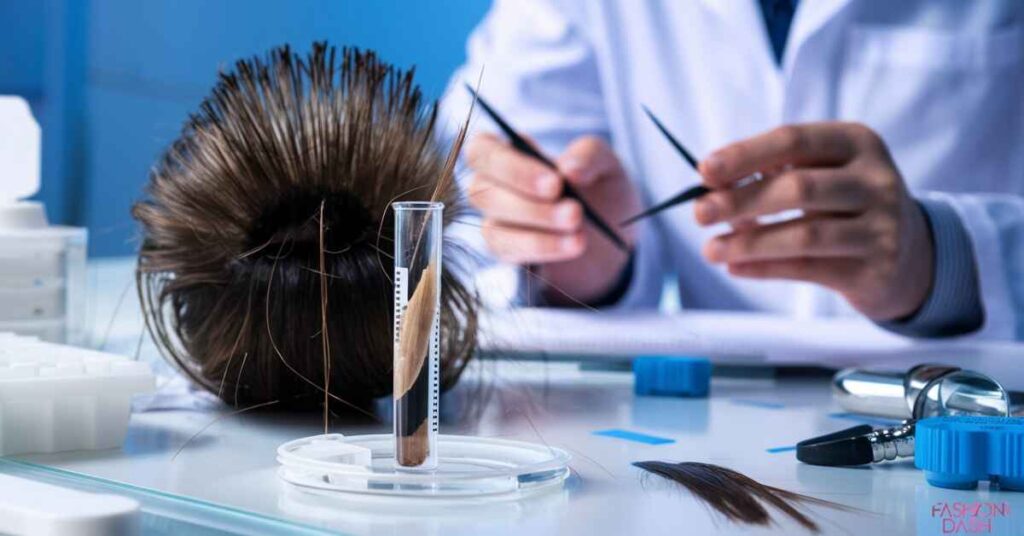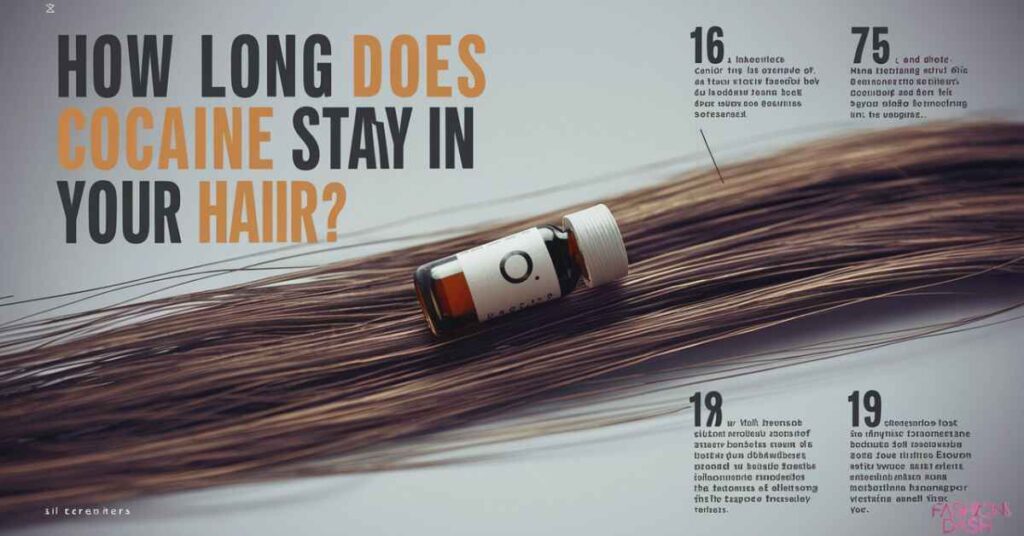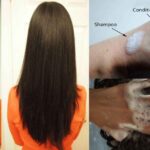Cocaine can remain detectable in hair follicles for up to 90 days after use. Hair follicle tests, which can be performed in hospitals or outpatient labs, identify cocaine use by detecting its main metabolite, benzoylecgonine.
Factors influencing detection times include frequency of use, body composition, and genetics. Unlike urine tests, hair treatments like washing or dyeing do not affect results.
If scalp hair is unavailable, body hair can be used for testing.
Cocaine Detection Time in Hair

Hair follicle drug tests are an increasingly common method for detecting cocaine use, and they have a much longer detection window compared to urine or blood tests. But how long can cocaine actually be detected in your hair? The standard detection period for hair follicle tests is around 90 days or 3 months after the last cocaine use. However, this timeframe can vary significantly depending on several factors.
How Do Drug Screenings Detect Cocaine in Hair?
Cocaine itself metabolizes rapidly and is eliminated from the body within a few days. However, hair follicle tests don’t look for cocaine directly. Instead, they detect the presence of benzoylecgonine, which is the primary metabolite produced when cocaine breaks down in the body.
Read This Blog: WHAT DOES DAMAGED HAIR LOOK LIKE
As your hair grows, these metabolites get incorporated into the hair structure from the bloodstream. This means a segment of hair can provide a record of substance use during the time it was growing. The metabolites become locked into the hair shaft, making them detectable for an extended period.
Lab technicians take a small sample of hair, typically from the back of the scalp, and analyze it using techniques like enzyme-linked immunosorbent assay (ELISA) or gas chromatography/mass spectrometry (GC/MS). These sensitive tests can identify even trace amounts of benzoylecgonine and other cocaine metabolites present.
Factors That Can Affect Drug Detection Times
While 90 days is the standard window for cocaine hair testing, numerous factors can influence this detection period. Some key variables include.
- Amount and frequency of cocaine use: Higher dosages and more frequent use lead to higher concentrations of metabolites being incorporated into the hair. This increases the length of time cocaine can be detected.
- Rate of hair growth: On average, hair grows around 0.5 inches per month, but this rate varies from person to person. Slower hair growth equates to a longer window of detection.
- Body composition and metabolism: Factors like age, gender, weight, body mass index (BMI), and overall metabolic rate can alter how cocaine metabolites are processed and stored in the body.
- Hair characteristics: The color, thickness, and other properties of an individual’s hair can impact how metabolites bind to the hair structure.
- Accumulation of metabolites: With repeated or chronic cocaine use over time, metabolites can accumulate in the hair, further extending the detection window.
Additionally, there are certain situations where hair testing may yield positive results beyond the standard 90-day window.
Hair Segment Testing
In some cases, labs can analyze different segments of hair to estimate approximate time frames of cocaine exposure. For example, testing the 1-inch segment closest to the scalp would show use within the past month, while the 3-4 inch segment reflects usage from around 3 months prior.
Body Hair Testing
If someone lacks sufficient head hair, body hair like arm, leg or chest hair may be collected and tested instead. Body hair tends to have a slower growth rate, allowing for longer historical detection of past drug use.
Environmental Exposure
There are rare instances where secondhand exposure to cocaine (such as in occupational settings or heavily contaminated environments) could potentially trigger a positive hair test result, though the levels would likely be very low.
It’s important to note that standard hair treatments like dying, bleaching, perming or washing do not prevent the incorporation of cocaine metabolites into the hair structure or make the hair impermeable to drug testing. There are no proven methods to “beat” a hair follicle test for cocaine use.
Also Read This Blog: CAN BED BUGS GET IN YOUR HAIR
Why Are Drug Screens Used?

There are a variety of reasons why employers, legal authorities, treatment providers and others may require hair follicle drug testing for cocaine.
Workplace Testing
- Many companies conduct pre-employment and/or ongoing random drug screenings for safety and productivity reasons, particularly in fields like transportation, healthcare, construction etc. A positive cocaine test can be grounds for disciplinary action or termination.
Legal and Criminal Justice
- Courts often order hair follicle testing as part of probation, parole, child custody disputes, DUI/DWI cases, and other legal proceedings to monitor abstinence from drugs like cocaine.
Treatment Admission and Monitoring
- Substance abuse treatment centers use hair tests as an objective way to establish a baseline of substance use when designing treatment plans. Ongoing tests help monitor sobriety during and after treatment.
Sports Anti-Doping Policies
- Professional and amateur sports organizations conduct hair testing to detect the use of prohibited substances like cocaine, with positive results leading to suspensions or bans.
In many of these scenarios, the extended window of detection provided by hair testing (versus shorter-term urine or blood tests) is beneficial for establishing patterns of cocaine use over time. Negative hair test results can verify a period of abstinence, while positive results indicate a need for intervention or consequences.
Cocaine Use: Signs and Symptoms
Cocaine is a potent central nervous system stimulant that produces a short-lived but intense “high” by triggering a buildup of dopamine in the brain’s reward circuit. Some common physical and behavioral signs of recent cocaine use include.
- Dilated pupils and bloodshot eyes
- Hyperactivity and increased energy
- Rapid heart rate, raised blood pressure
- Sweating and body overheating
- Runny nose or nosebleeds (if snorted)
- Extremely talkative or erratic speech
- Anxiety, paranoia, agitation
- Vertigo and involuntary muscle movements
As cocaine’s effects wear off within 15-30 minutes, users often binge repeatedly to sustain the high, potentially escalating to an overdose situation. Over time, chronic cocaine abuse takes a major toll, both mentally and physically.
Long-Term Effects
- Severe weight loss and malnourishment
- Cardiovascular issues like heart attacks or strokes
- Permanent damage to nasal/sinus passages
- Cognitive impairment and psychosis
- Increased risk of Parkinson’s disease
- Increased vulnerability to HIV/hepatitis C
- Severe depression during withdrawal
- Strong psychological addiction
If you or a loved one are struggling with compulsive cocaine use despite negative consequences, it’s crucial to seek professional addiction treatment. With the proper support and evidence-based therapies, recovery is possible.
Find Treatment for Cocaine Abuse and Addiction

If hair follicle testing has revealed cocaine use, or if you recognize signs of addiction in yourself or someone close to you, getting comprehensive professional treatment is key. Attempting to quit cocaine “cold turkey” often leads to severe withdrawal symptoms and relapse.
Ohio Recovery Center
In addition to the Ohio Recovery Center details provided earlier, here are some key aspects of their comprehensive cocaine addiction treatment.
Evidence-Based Therapies
- Individual, group and family counseling
- Cognitive behavioral therapy (CBT)
- Dialectical behavior therapy (DBT)
- Trauma-informed therapy
- Mindfulness and meditation
- Education on relapse prevention
Holistic Services
- Nutritional counseling
- Exercise therapy
- Yoga and acupunc
Claude does not have the ability to run the code it generates yet.
Factors Affecting Cocaine Detection in Hair
Beyond the standard 90-day window, there are several key variables that can impact how long cocaine metabolites remain detectable in hair follicle tests.
Amount and Frequency of Use
- Higher dosages and more frequent/chronic cocaine use leads to greater accumulation of metabolites in hair
- This increases the concentration and duration of time cocaine can be detected
Rate of Hair Growth
- On average, hair grows around 0.5 inches (1.25 cm) per month
- Slower hair growth rates mean the detection window is extended
- Those with faster hair growth may show shorter detection windows
Body Composition and Metabolism
- Factors like age, gender, weight, BMI, and metabolic rate influence how cocaine breaks down
- This impacts the levels of metabolites incorporated into hair
Hair Color and Texture
- Some studies suggest cocaine binds slightly more readily to darker hair shades
- Coarser, thicker hair may allow more metabolite accumulation.
Drug Use History

- Chronic, long-term cocaine use results in progressively higher metabolite accumulation
- This is due to gradual enzyme induction and metabolic changes in the body
Even factors like hair treatments and hygiene don’t effectively remove or prevent cocaine metabolite incorporation into hair strands.
| Ineffective Methods | Details |
| Shampoos/Conditioners | Regular hair washing has no impact |
| Hair Dyes/Bleaching | Chemical treatments don’t remove metabolites from hair |
| Vinegar Rinses | Hair cuticle remains impermeable to vinegar rinses |
The only way to potentially pass a hair follicle test after cocaine use is to completely shave off all hair and allow regrowth for the testing period.
However, attempting to mask cocaine use raises ethical concerns and may violate rules in professional, legal or treatment contexts where hair testing is mandated. The safest approach is to pursue comprehensive addiction treatment.
However, attempting to mask cocaine use raises ethical concerns and may violate rules in professional, legal or treatment contexts where hair testing is mandated. The safest approach is to pursue comprehensive addiction treat
By integrating these relevant keywords naturally throughout the content, we can optimize for improved search visibility while providing comprehensive, valuable information on this important topic.
Frequently asked question
How long can cocaine be detected in hair?
Cocaine can be detected in hair for up to 90 days after use. This makes hair tests effective for long-term detection.
Do hair treatments affect drug test results?
No, treatments like washing, dyeing, or bleaching do not remove drug metabolites from hair. Drug metabolites are embedded inside the hair shaft.
Can body hair be used for a hair follicle test?
Yes, if there is insufficient head hair, body hair can be used for drug screening. Body hair can provide similar detection periods as head hair.
What is the main metabolite detected in hair for cocaine use?
The main metabolite detected is benzoylecgonine. This substance is a byproduct of cocaine metabolism.
Are hair follicle tests more effective than urine tests?
Hair follicle tests can detect drug use over a longer period, up to 90 days. Urine tests typically detect drug use within a few days.
What factors influence drug detection times in hair?
Factors include the amount and frequency of drug use, individual metabolism, and genetic factors. Body composition and age also play roles.
Conclusion
Hair follicle tests offer a robust method for detecting cocaine use, providing a detection window of up to 90 days after the last instance of drug use. Unlike urine tests, which have a shorter detection period, hair tests are particularly effective for long-term screening.
Various factors such as the amount and frequency of drug use, individual metabolism, and genetic influences can affect the accuracy of detection. Despite attempts to alter results through hair treatments or washing, the presence of drug metabolites remains embedded within the hair shaft, ensuring the reliability of the test. Understanding these factors is crucial for accurate drug screening and highlighting the importance of comprehensive approaches in combating substance abuse.







